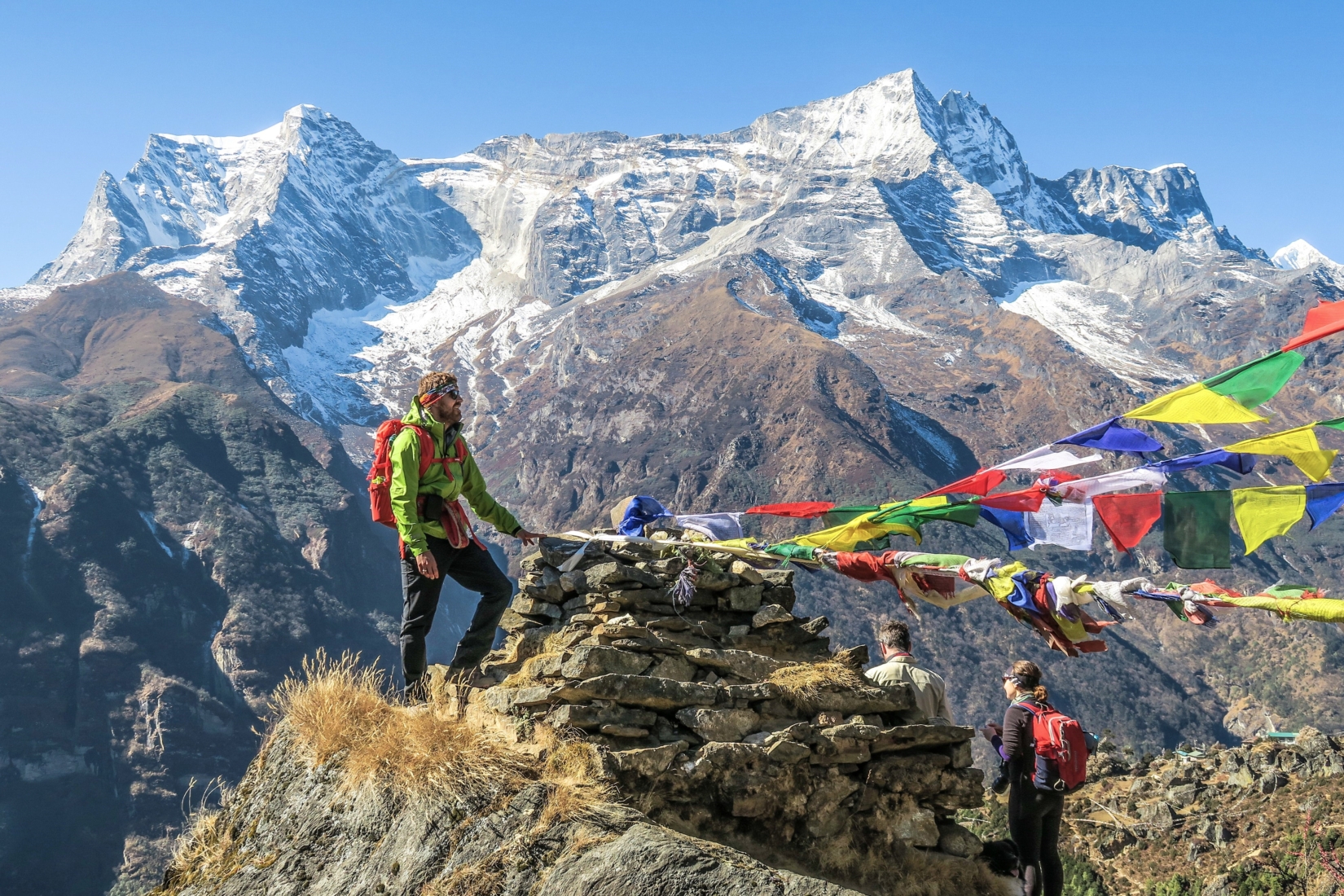A trek to the Everest Base Camp delivers stunning scenery, cultural exchanges, and a sense of accomplishment unlike any other. The Everest Base Camp walk, located in the heart of the Himalayas, is a hard yet rewarding adventure that allows trekkers to get up close and personal with the world’s tallest peak, Mount Everest. We’ll walk you through all you need to know to make your Everest Base Camp journey a great experience in this definitive guide.
Planning & Preparation
Before setting foot on the Everest Base Camp trail, careful planning and preparation are required. Begin by determining the optimal time to trek, which is often between the pre-monsoon (spring) and post-monsoon (fall) seasons. These months have the clearest skies and the most pleasant weather. Examine the local restrictions, permits, and fees, which frequently include the Sagarmatha National Park Entry Permit and the Khumbu Pasang Lhamu Rural Municipality Entry Permit.
Physical Endurance and Training
The trek to Everest Base Camp is a strenuous endeavor that necessitates a respectable level of physical condition. Regular cardiovascular and strength training will help you increase endurance and stamina. This hike requires you to walk on difficult terrain and acclimate to high elevations. Include uphill and downhill walking in your training routine to help your muscles prepare for the road ahead.
Packing Requirements
Packing for the Everest Base Camp climb necessitates considerable thought. Your clothing should find a balance between keeping you warm and dry while remaining lightweight. Important items include:
- Clothing: Layering is essential. Moisture-wicking base layers, insulating mid-layers, and a waterproof, windproof upper layer are all recommended. Remember to bring a warm down jacket and a decent pair of hiking trousers.
- Footwear: Sturdy, well-broken-in hiking boots with ankle support are essential. Bring extra pairs of soft socks.
- Gear: A decent quality backpack, a sleeping bag suited for freezing temperatures, trekking poles for stability, a torch, UV-protected sunglasses and a wide-brimmed hat are all recommended.
- Miscellaneous: Toiletries, sunscreen, a first-aid kit, a camera, power banks, and water purification tablets are examples of miscellaneous items.
Altitude Sickness and Acclimatisation
During the Everest Base Camp hike, altitude sickness is a major issue. The programme includes acclimatization days to help your body acclimate to the lower oxygen levels. Stay hydrated, walk slowly, and listen to your hiking guide’s instructions. Familiarize yourself with altitude sickness symptoms such as headache, nausea, dizziness, and shortness of breath. If symptoms intensify, it is critical to descend to lower elevations as soon as possible.
Route & Itinerary
The trek to Everest Base Camp takes about 12 days on average, however this can vary depending on the route and acclimatization days. The most popular route begins with a spectacular flight to Lukla, then continues with a trek through picturesque Sherpa settlements such as Namche Bazaar, Tengboche, Dingboche, and Lobuche. The final push leads you to Everest Base Camp and the adjoining Kala Patthar viewpoint, which offers a breathtaking vista of the surrounding peaks.
Cultural Perspectives and Sherpa Hospitality
The Everest region is a cultural treasure trove as well as a natural marvel. Interact with the local Sherpa communities, which are noted for their toughness and friendliness. Visit old monasteries like Tengboche and observe traditional ceremonies and rituals. Accept the opportunity to learn about their way of life and the difficulties they confront in this harsh environment.
Permits and Regulations for Hiking
Permits are required to enter the Sagarmatha National Park and the Khumbu Pasang Lhamu Rural Municipality. These licenses aid in the funding of conservation activities as well as local development projects. Leave No Trace standards should be followed to respect local culture, wildlife, and natural surroundings.
Porters and Trekking Guides
Hiring a local trekking guide and porters not only helps the local economy, but it also improves your whole experience. Experienced guides are familiar with the terrain, weather, and altitude challenges. Porters may carry the majority of your heavy equipment, enabling you to focus on enjoying the journey.
Accommodation and food range from modest tea houses to more comfortable resorts along the Everest Base Camp climb. Rooms are minimal, with a bed, blanket, and pillow as standard. Traditional Nepali cuisines are served alongside foreign food. Dal Bhat (rice and lentil soup) is a staple that gives you the energy you need for the trip. Drink plenty of clean water or herbal tea to stay hydrated.
Safety and Emergency Planning
Safety should always come first. Check that your trekking firm is reliable and adheres to safety regulations. Carry a complete first-aid kit with you, including altitude sickness medication. Maintain a list of emergency contacts as well as evacuation arrangements. Travel insurance is essential for covering any unforeseeable events, such as injuries or medical problems.
Conclusion
The Everest Base Camp trek is more than simply a physical journey; it is also a spiritual and cultural adventure that will leave you with memories to last a lifetime. The breathtaking scenery, the camaraderie of fellow trekkers, the hospitality of the Sherpa people, and the sense of success when standing in front of the majestic Everest are all experiences that are difficult to put into words. With careful planning, environmental sensitivity, and an open heart, you may make this dream expedition a reality and stand in the footprints of the world’s highest peak.
The Everest Base Camp trek is more than simply a physical journey




